Special Report
How Weddings Have Changed Over the Last Century
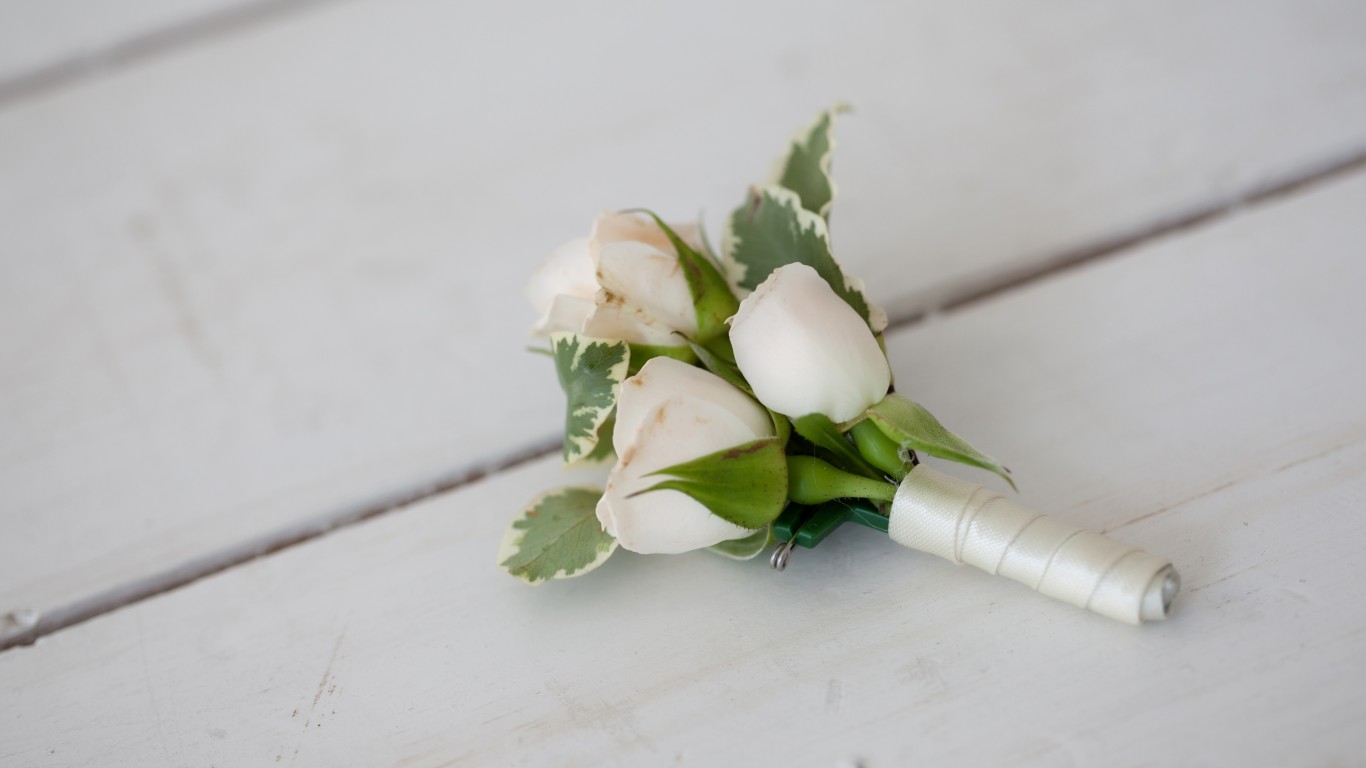
Published:
Last Updated:

It’s hard for many brides to imagine walking down the aisle without wearing the perfect white dress, but that tradition was actually not popularized until 1840, when Queen Victoria wore one during her wedding.
For years since, it was unheard of for women to wear anything but white, but modern times are changing the fashion faux pas once again. Though Queen Victoria may have had a lavish affair on her big day, for the average couple the big day was a more modest event as far back as the 1960s, when parents hosted the reception.
When planning a wedding, the couple and their families want to make the ceremony and reception a memorable celebration of love. In their attempt to do so, notable trends and traditions have emerged. And whoever is financing the event often spares no expense to make sure everything is exactly right — and people in some states spend a lot more on their big day than others.
Click here to see the 26 ways weddings have changed over the decades.
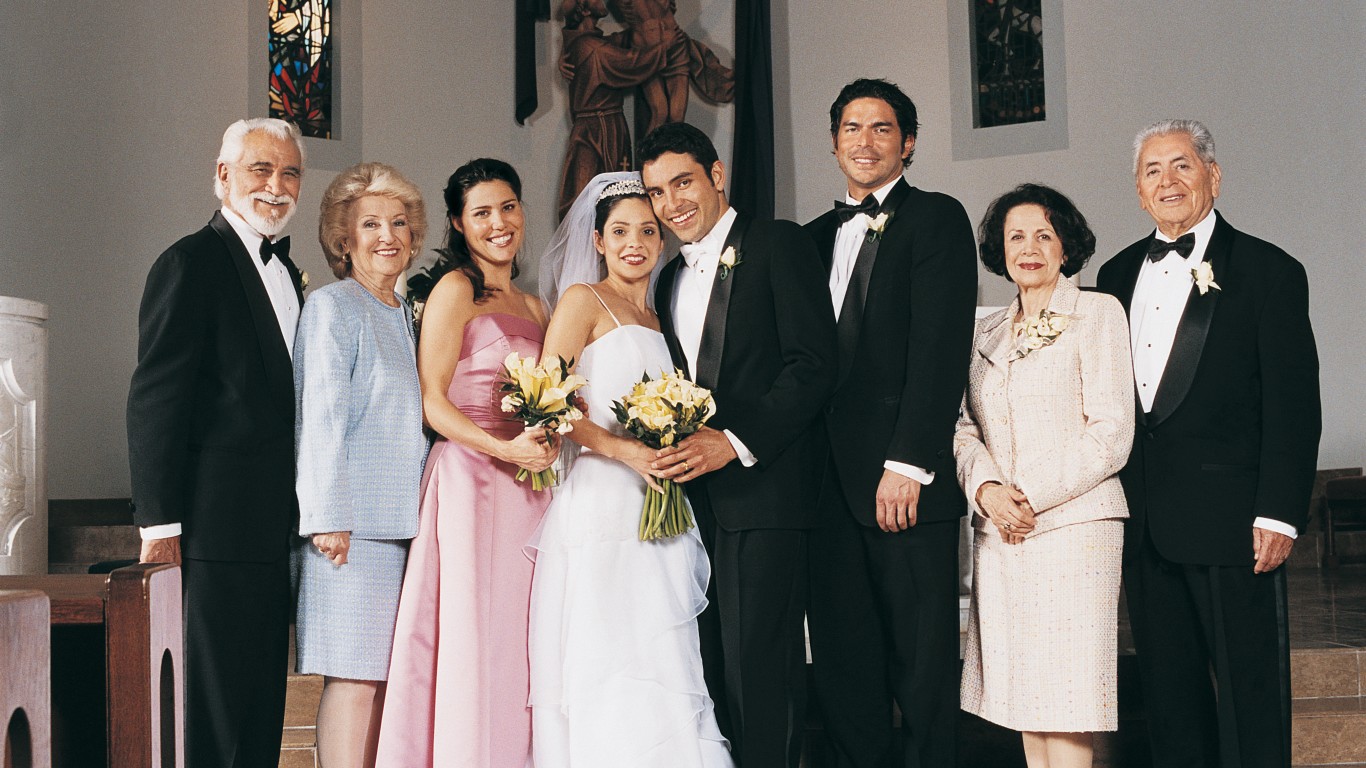
1. Asking the father for his daughter’s hand in marriage
It was once not only a sign of respect to ask the intended bride’s father permission to marry his daughter, but also a necessity as fathers often made that decision. Times have changed considerably since women were “passed on” from the father to the husband. Still, even today, the tradition is considered respectful and is expected in some more traditional families and cultures.
[in-text-ad]
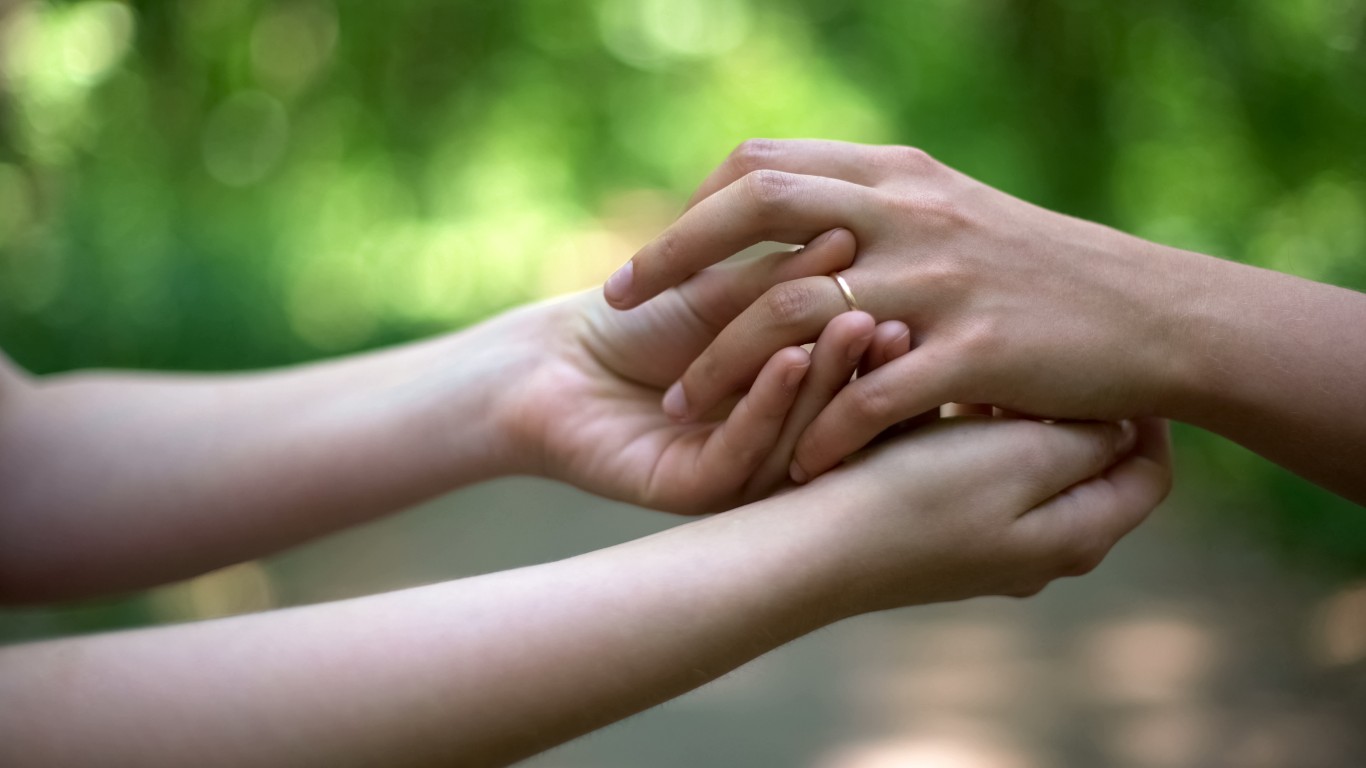
2. Diamond engagement rings
Before the 1940s, diamonds were not a popular engagement ring. A copywriter changed that with the De Beers slogan, “A Diamond Is Forever,” linking the stone with romance and increasing its value. Now, it’s hard to imagine that special moment without a diamond. But recently, with modern budgets and big carat trends, diamonds are not every girl’s best friend. It’s not uncommon for guys to propose with rings with other stones.
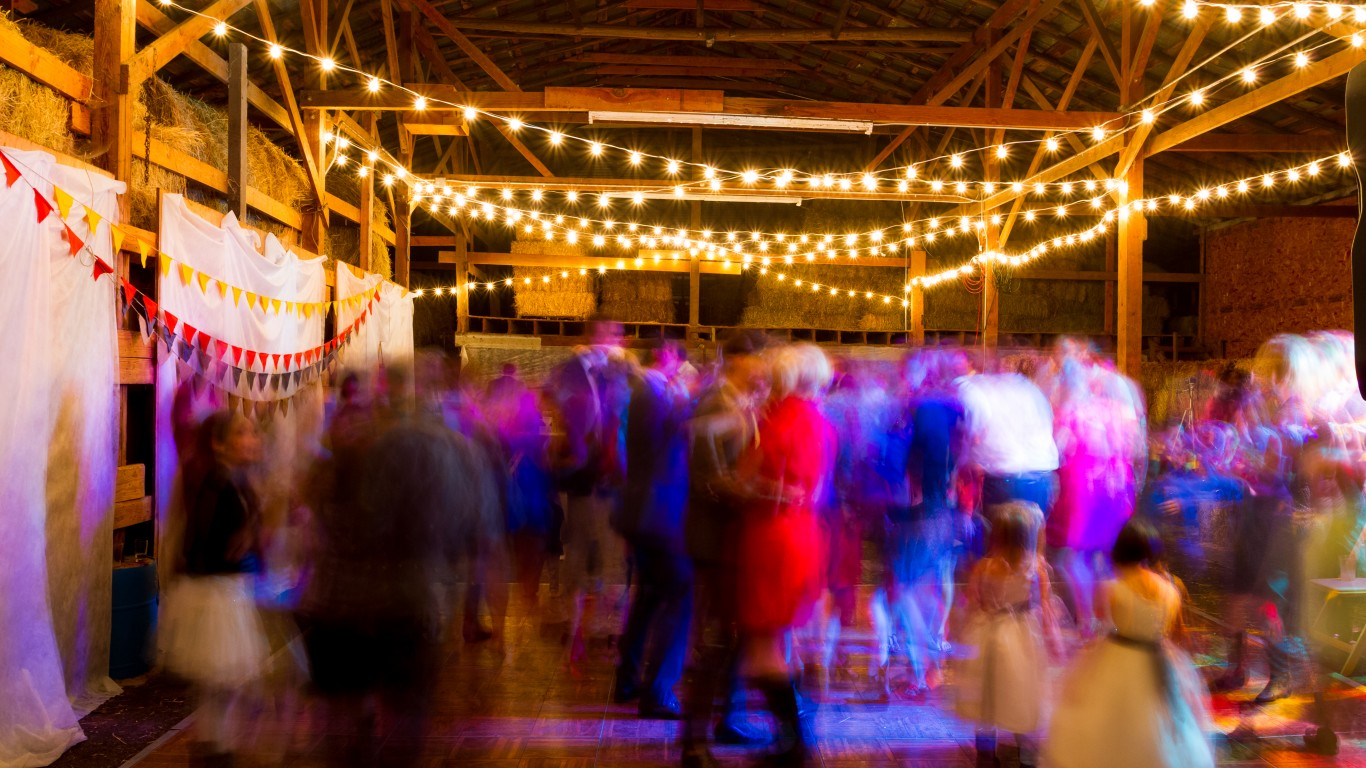
3. Bride’s parents pay for the wedding
Traditionally, the bride’s parents were not only responsible for paying for the wedding, but also as the hosts of the reception they had a say in planning the celebration. The groom’s parents may have also paid for the reception of a larger ceremony in the past, but today, it’s more common for the couple to foot all or most of the bill. If parents from either side still want to help out, there are plenty of etiquette guides to help couples figure out who should pay for what.
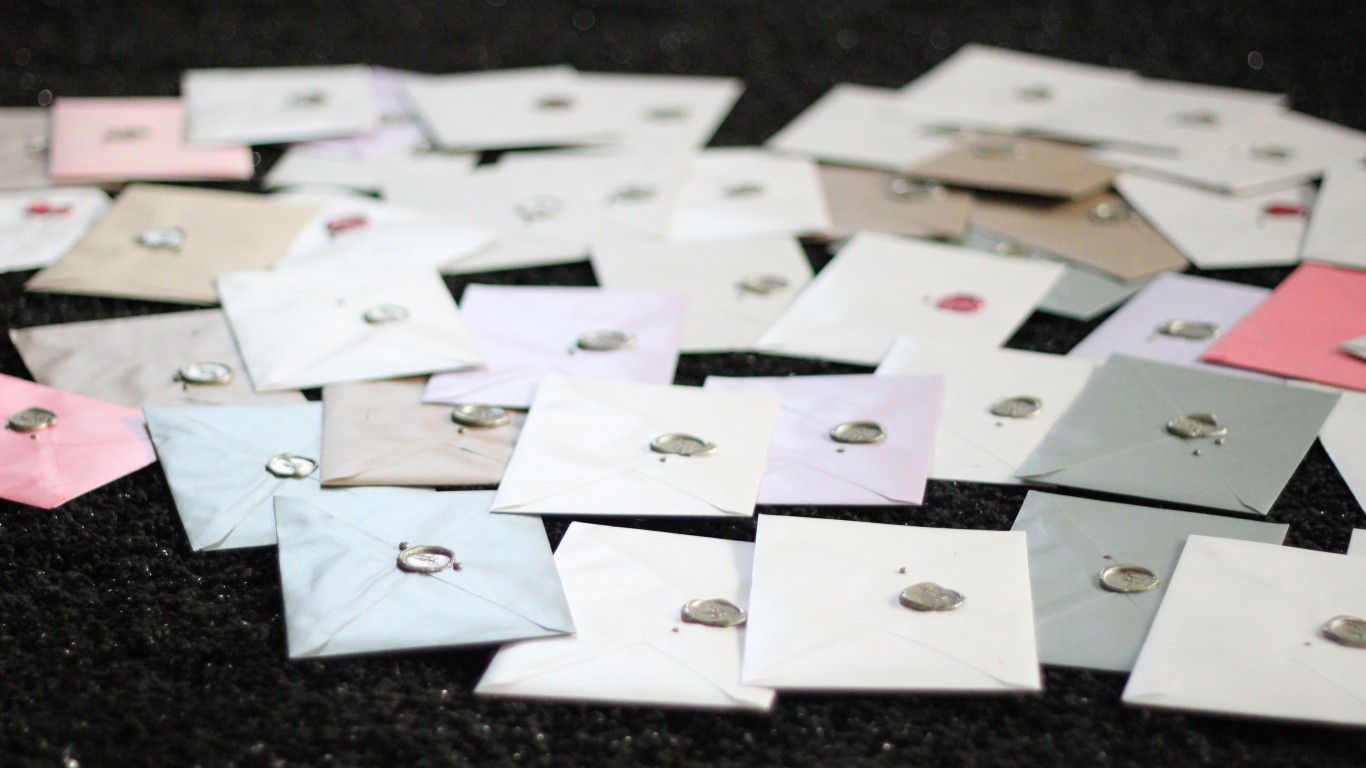
4. Save-the-date cards
With today’s hectic schedules and destination weddings, save-the-date cards are a rather new trend in weddings. Though they aren’t as formal as the actual wedding invitation, there are etiquette rules that must be followed with them â including sending them for any wedding that’s not a short engagement. Also, experts discourage sending only electronic versions, in case of spam filters and older relatives.
[in-text-ad-2]
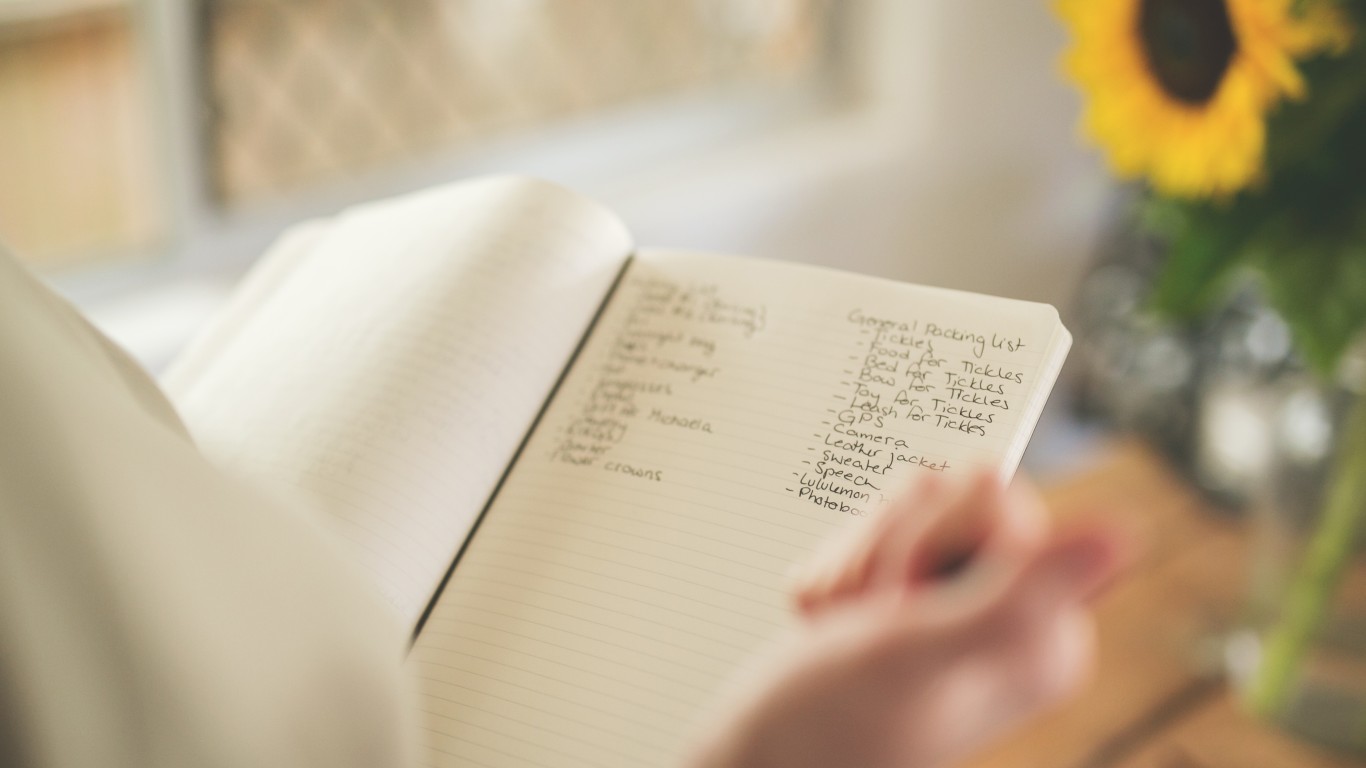
5. Wedding planner
Weddings were once planned with the help of family, friends, or neighbors, but today, wedding planning has become a real business and job. The idea of a wedding planner came about when modern weddings turned into more extravagant events that needed a professional consultant. Today’s couples are willing to pay big bucks to hire one.
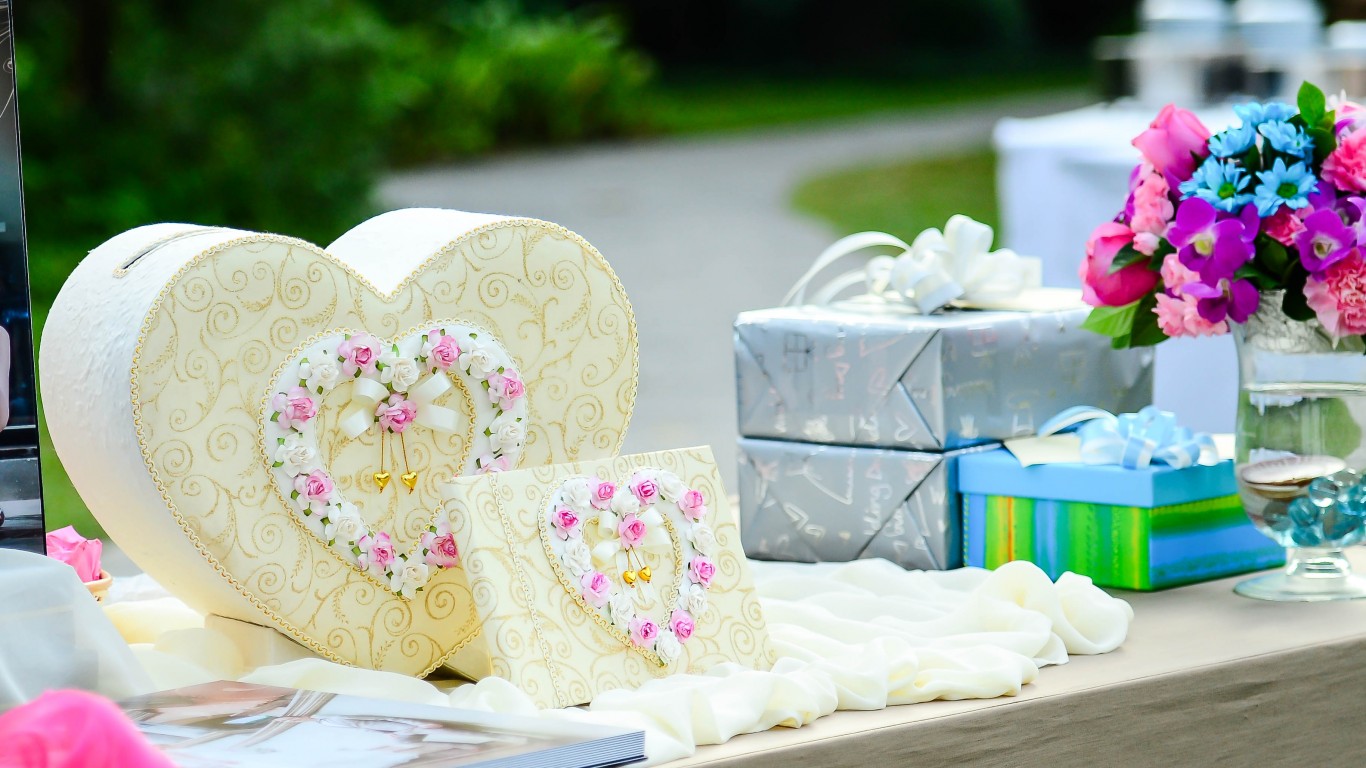
6. Wedding registry
The gift registry was invented in the 1920s, and with it, the idea that guests should give something to the bride and groom. Wedding gifts have evolved over time from crystal, silver, and china, and other presents for couples getting their first home together, to more practical gifts for modern couples and ones that are more personal. Some couples are even asking for cash now.
[in-text-ad]
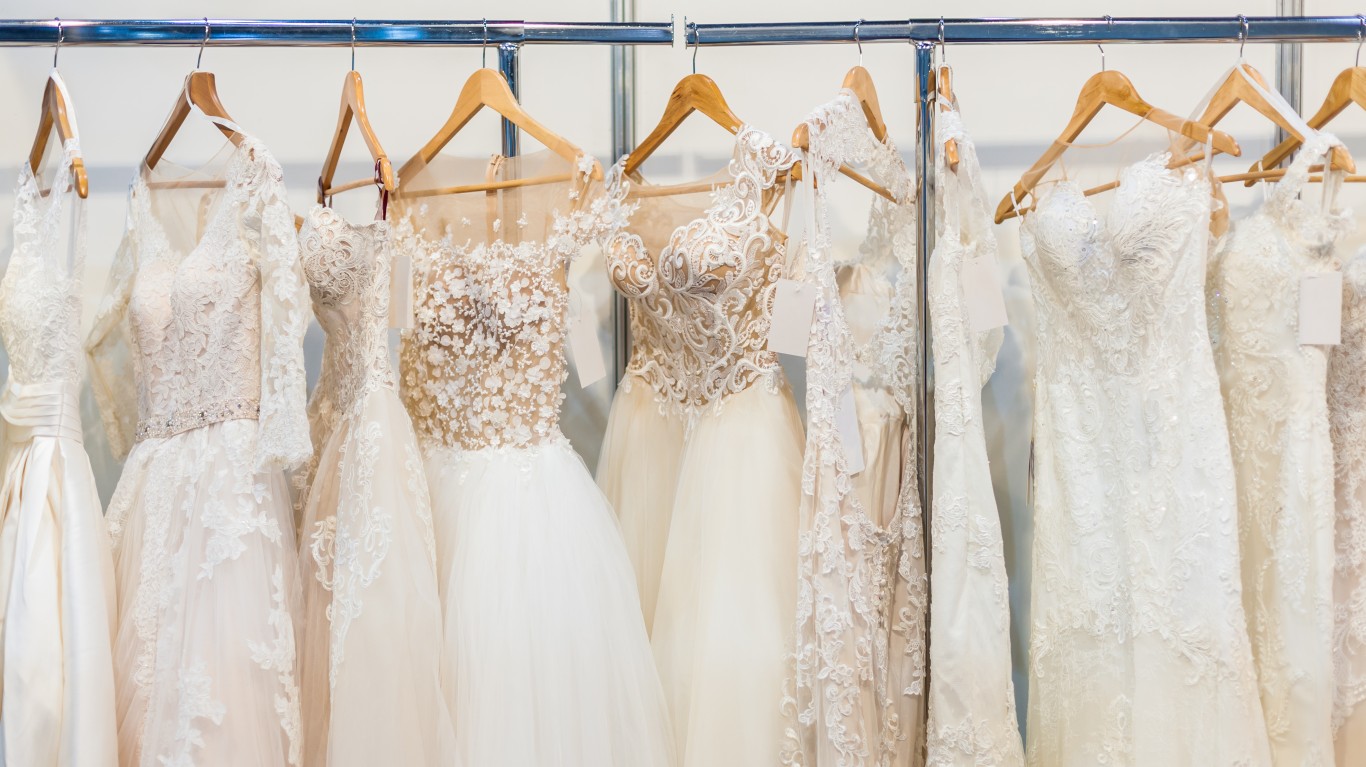
7. White wedding dress
The white wedding dress tradition started when Queen Victoria wore one for her wedding in 1840. Today’s brides are breaking the rules when it comes to the white dress. It is no longer reserved for first time weddings, and white isn’t the only color a bride can wear on her wedding day.
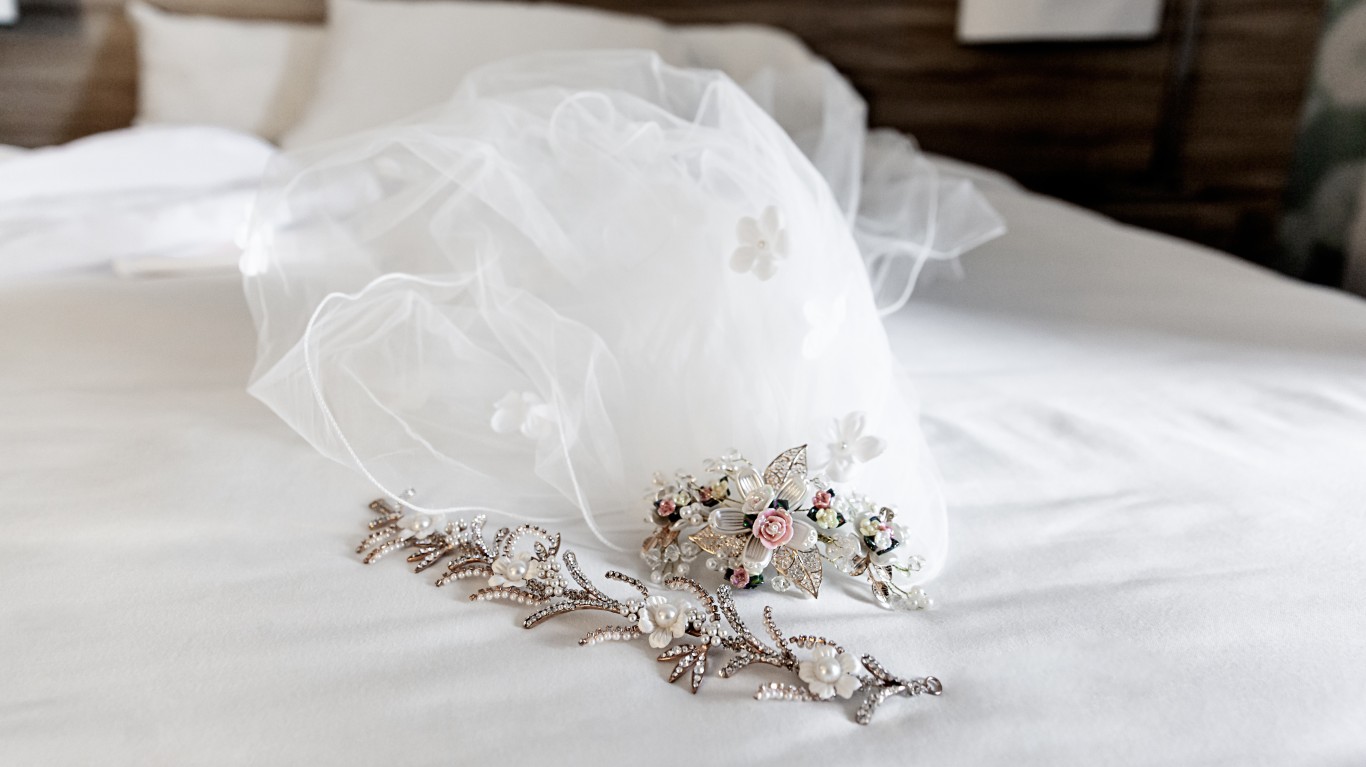
8. Wedding veil
The wedding veil can be traced back to ancient Rome, when it was believed the accessory would protect a bride from evil spirits. It later became a pure style statement when Queen Victoria wore one during her wedding in 1840. The veil has transformed through the decades with fashion trends. Even today, veils are seen as the one accessory that makes a bride a bride, as proven in any episode of “Say Yes to the Dress.” But some brides are choosing to go veil-free and are donning alternative accessories, such as flower crowns, hair pins, and tiaras.
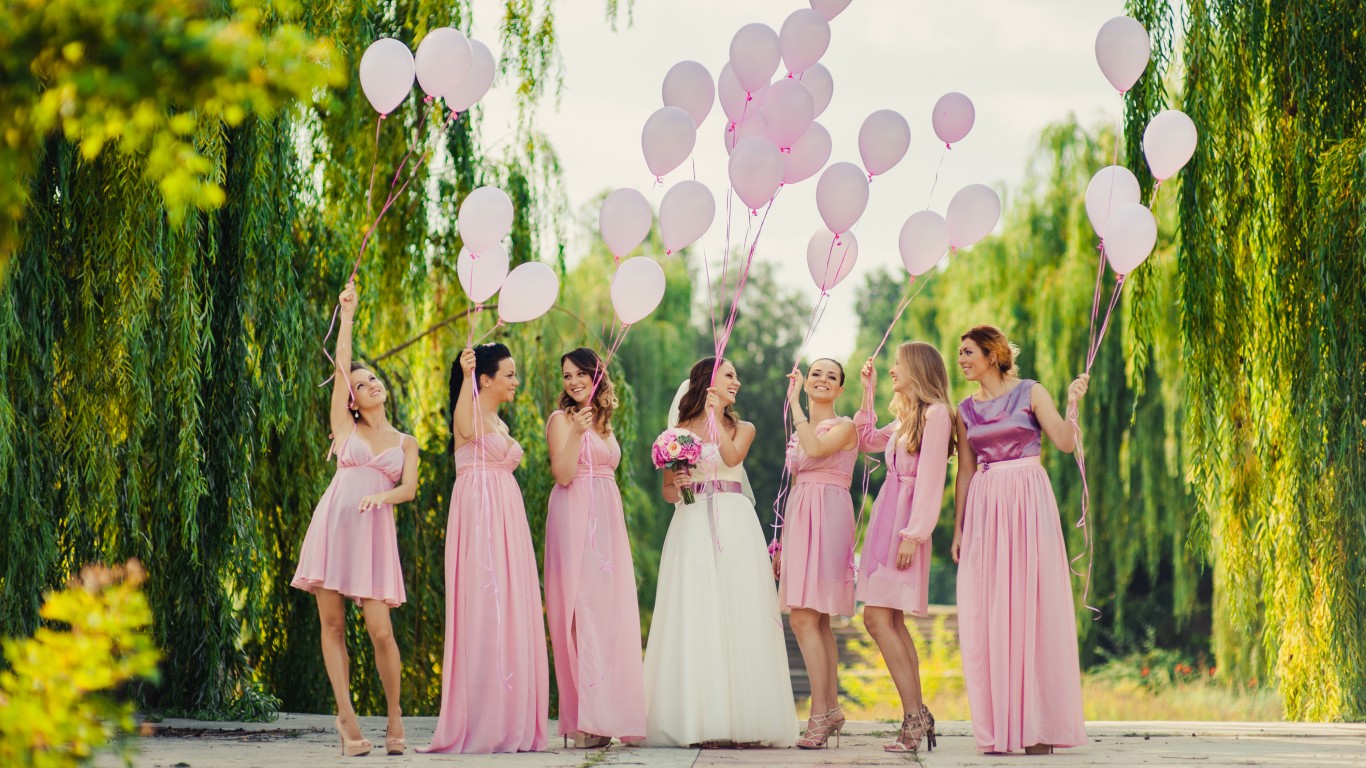
9. Matching bridesmaids
It was once a faux pas to have mismatching bridesmaid dresses. Bridesmaids tended to dread these dresses, which were often coordinated with the color scheme of the wedding and were often thrown into the back of the closet as soon as the wedding was over. Today, this trend is somewhat less rigid but to different degrees. For example, in some weddings, bridesmaids have to wear the same dress, but each woman can wear a different color. In others, the bride would pick one color but let each bridesmaid wear a cut that flatters her.
[in-text-ad-2]
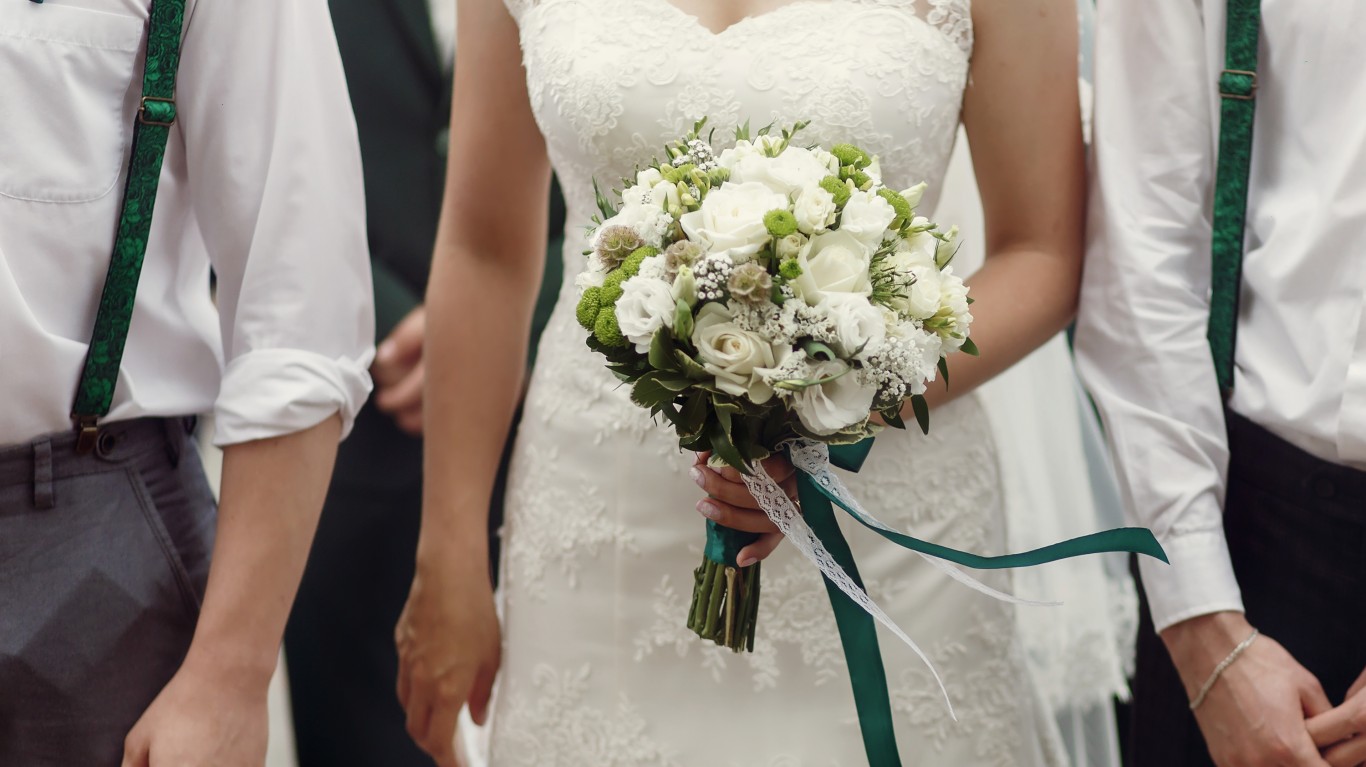
10. Different sexes in bridal parties
Traditionally, bridesmaids and groomsmen have been friends or close family, and they have also been the same gender as the bride or groom. More recently, brides and grooms are picking members of the opposite sex to stand at their side of the altar, whether a bride wants to include a male BFF or a groom is close to his sister.
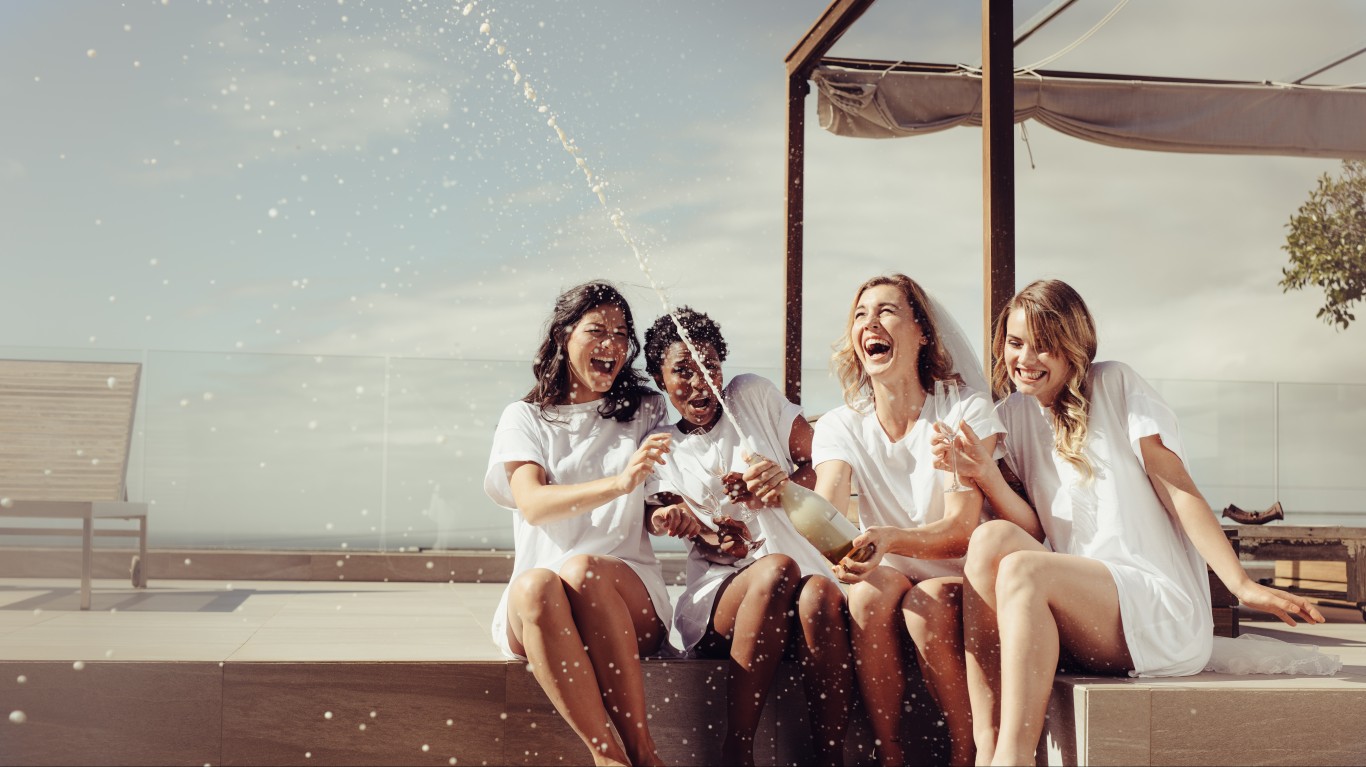
11. Bachelorette party
Bachelor parties may originate as far back as the fifth century B.C., but their female equivalent has much later origins, becoming popular in the 1980s. The tradition started as an alternative to the bridal showers of the 1950s and 1960s, where brides were given and opened presents that they could only show to their girlfriends, such as lingerie. It wasn’t until around 1980, fueled by the women’s liberation movement, that the parties started to become more extravagant events, sometimes involving strippers, as the guests of honor turned from “bachelor girls” to “bachelorettes.”
[in-text-ad]
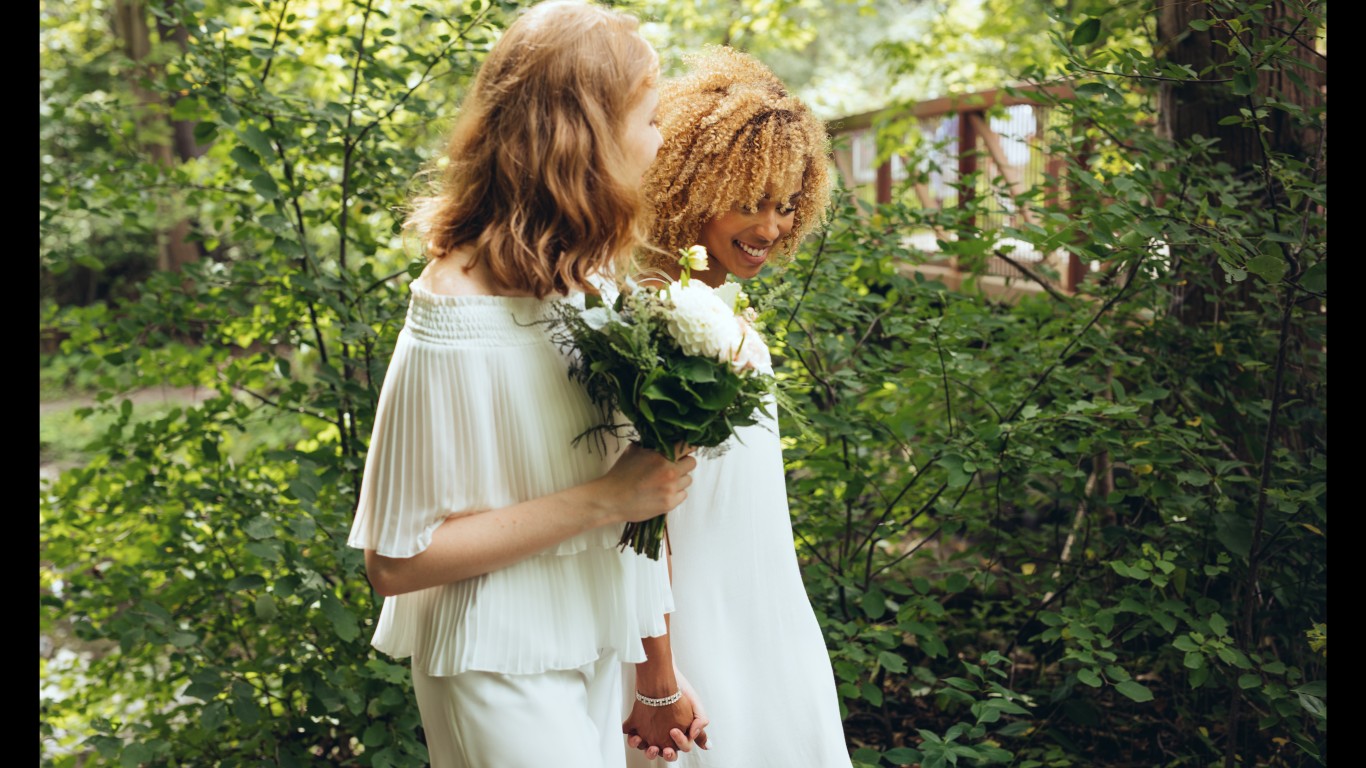
12. Elopements
The idea of elopement may seem like a modern idea, but the trend has earlier roots, dating back hundreds of years. In what could have been a reaction to the restrained Victorian Era, in the late 19th and early 20th century, a burst of young couples running off to get married was described in the press as “wrecking society,” but some of these couples were also noted as living happily ever after. Elopements again became more popular during the Great Depression to save money, and more recently are once again in style for this reason — and to reduce stress and create a more intimate or exotic event. The term has also evolved in modern times to mean more than just running off to get married without telling anyone to getting married in an extremely small, low-key ceremony, involving just the couple or a few more close relatives and friends.
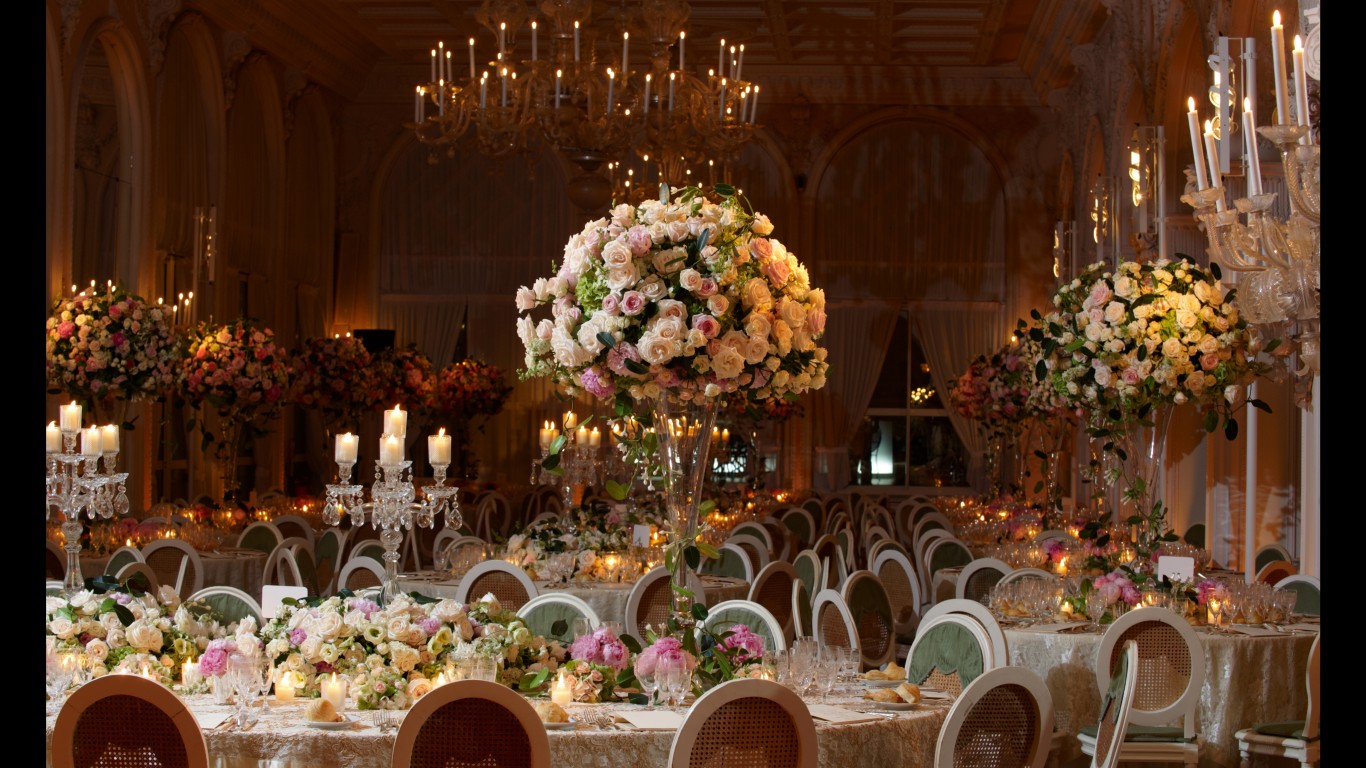
13. More extravagant weddings
The wedding industry has exploded over the years. What was once a more subtle affair has become more lavish and expensive. Though some people may be choosing to save with DIY weddings or elopements, modern weddings are still more extravagant than they once were. Some couples are even choosing to have two ceremonies to satisfy both a traditional religious ceremony for family and a glamorous one for themselves.
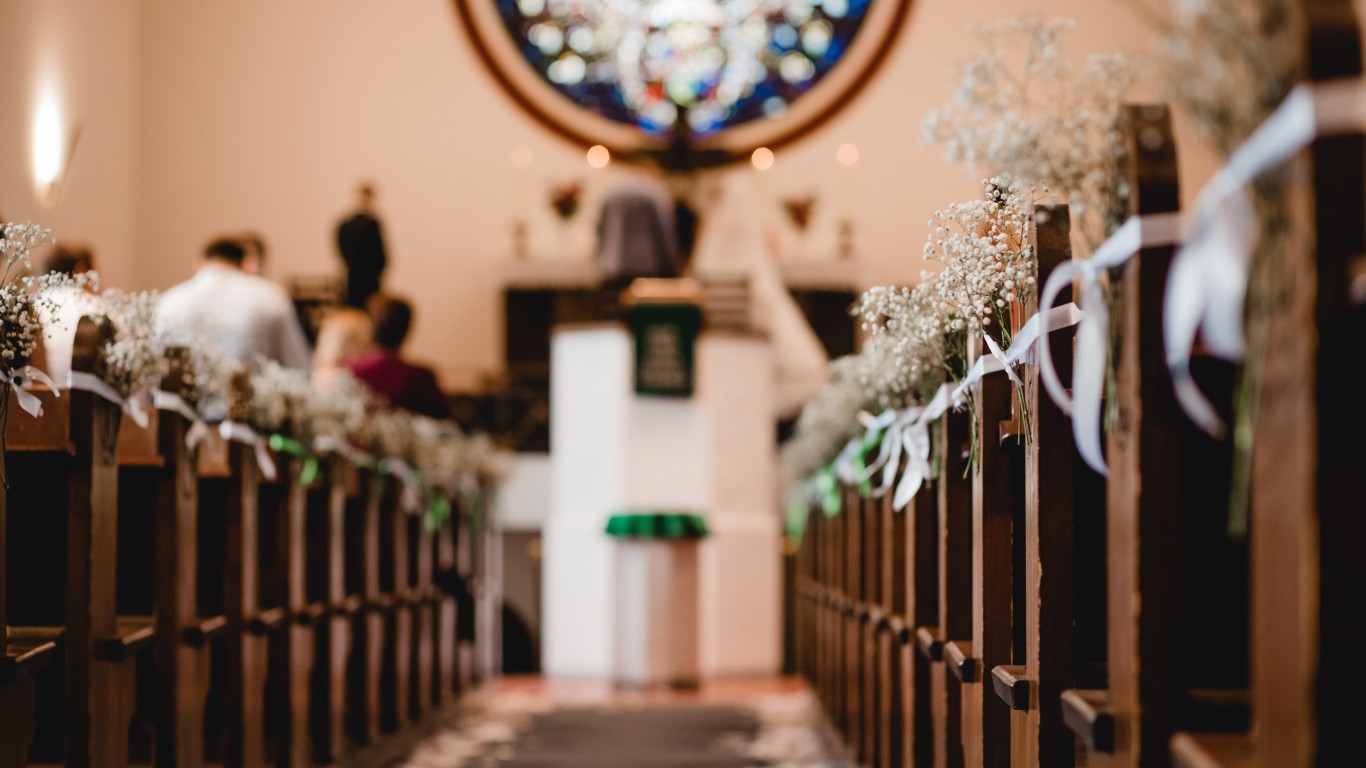
14. Getting married in a religious institution
What was once a given, getting married in a church, synagogue, or other religious institution, is not the preferred choice of couples today. Only 26% of couples had their wedding ceremony in a religious institution in 2016, according to The Knot, down from 41% in 2009. Some couples are choosing more scenic locations, including family estates, resorts, vineyards, and even barns.
[in-text-ad-2]

15. Destination weddings
About one in four American couples who married in 2018 considered their wedding a destination wedding, which is normally a wedding that is held 200 or more miles from home, according to The Knot. Couples today who are choosing a destination wedding are looking for a special experience that would stand out among their friends’ and families’ weddings. They are not just looking for a picturesque place, but somewhere that is meaningful or tells their story as a couple.
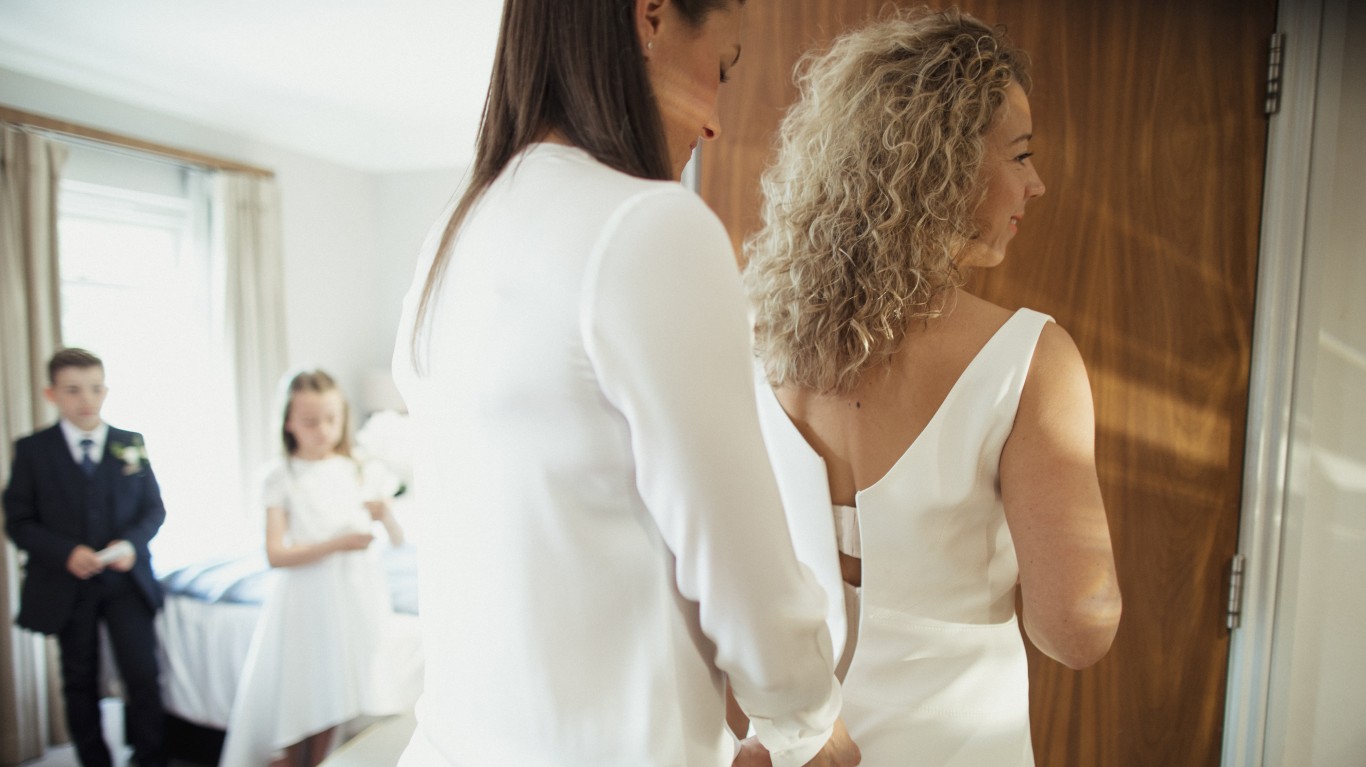
16. Bad luck to see the bride before the ceremony
Traditionally, it’s bad luck for the groom to see the bride before the ceremony. But the superstition actually dates back to the time of arranged marriages, when the man wouldn’t see his future wife until they were at the altar, as a glimpse before might have given him a chance to change his mind. Today, not only do we not have arranged marriages, but also many couples are living together before they get married. Some brides and grooms still follow tradition 24 hours before the ceremony, just in case, while others are choosing to meet up before the ceremony to take what are called “first-look” photos.
[in-text-ad]
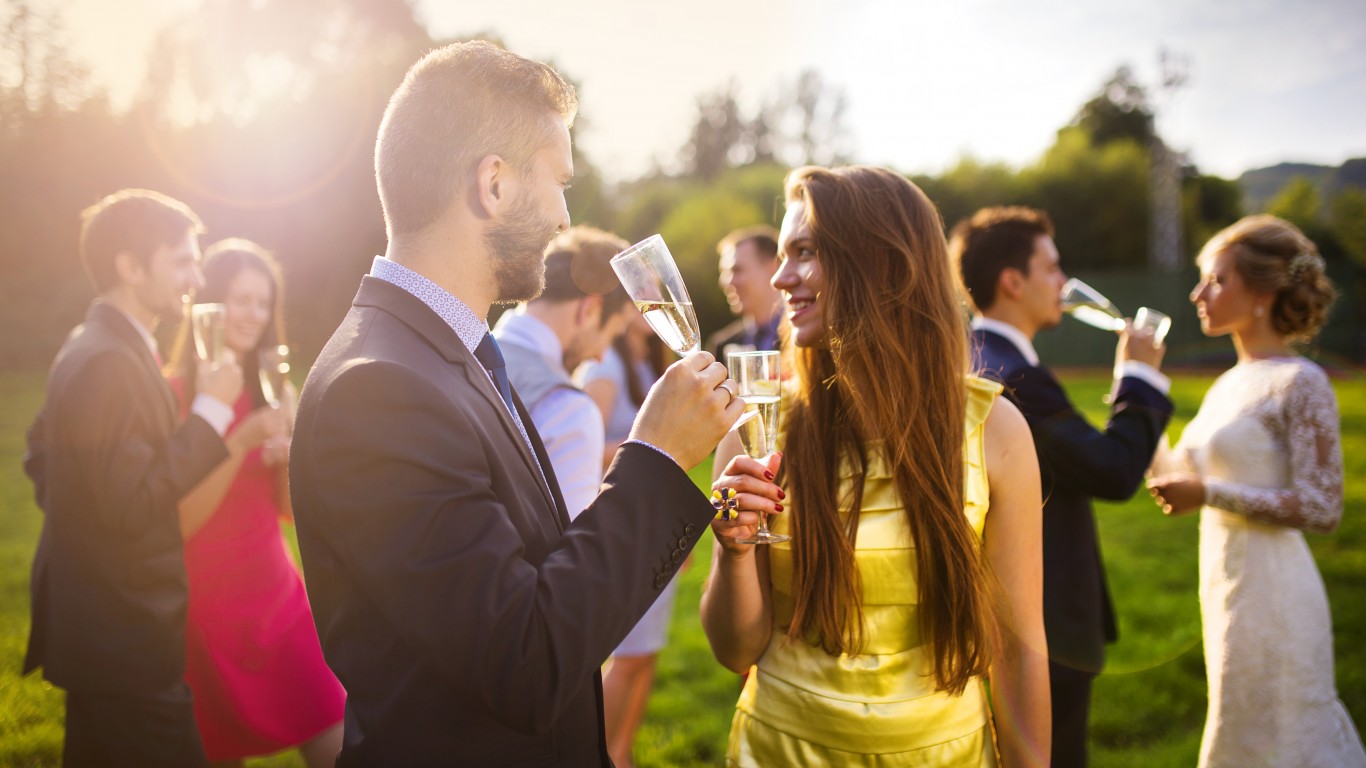
17. Wedding guest book
Though today some couples may not want to go to the trouble of having a wedding guest book, and even experts agree it’s no longer an absolute must, it’s still considered a good etiquette. In the past, the wedding guest book was an attractive book with some nice pens, and that is still fine for couples looking to save money. But today, some are taking the boring idea and making it more unique with fun takes on the tradition, such as signing a wooden bench.
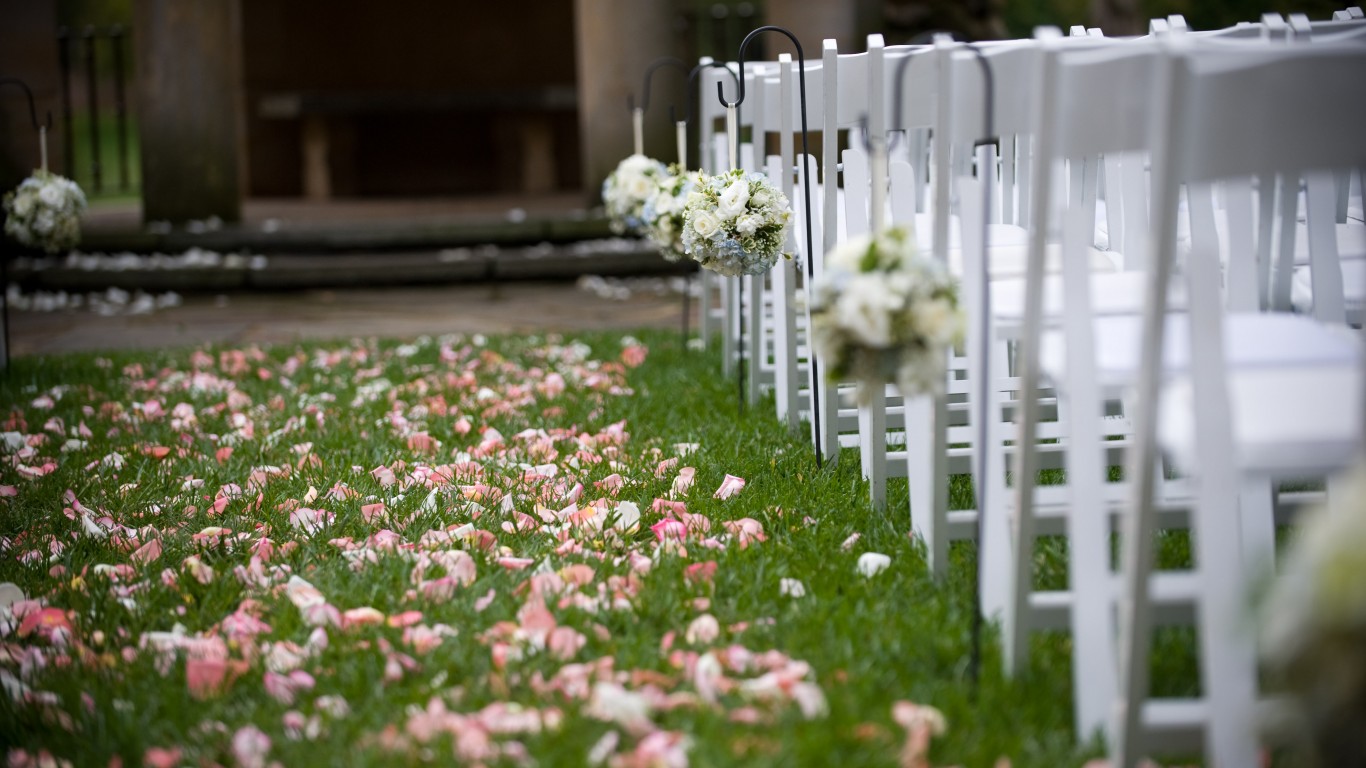
18. Using ‘Here Comes The Bride’ to walk down the aisle
Originally composed for Richard Wagner’s 1850 opera “Lohengrin,” “Here Comes the Bride” was believed to have first been used for the wedding of Queen Victoria’s oldest child in 1858. It’s since become the traditional choice for brides walking down the aisle. Among all brides, the tune is no longer as traditional as it once was, and more are favoring a more personalized or stylized choice to walk down the aisle. Also, as same-sex marriage become more common, more couples are looking for an alternative to the bridal-themed song.
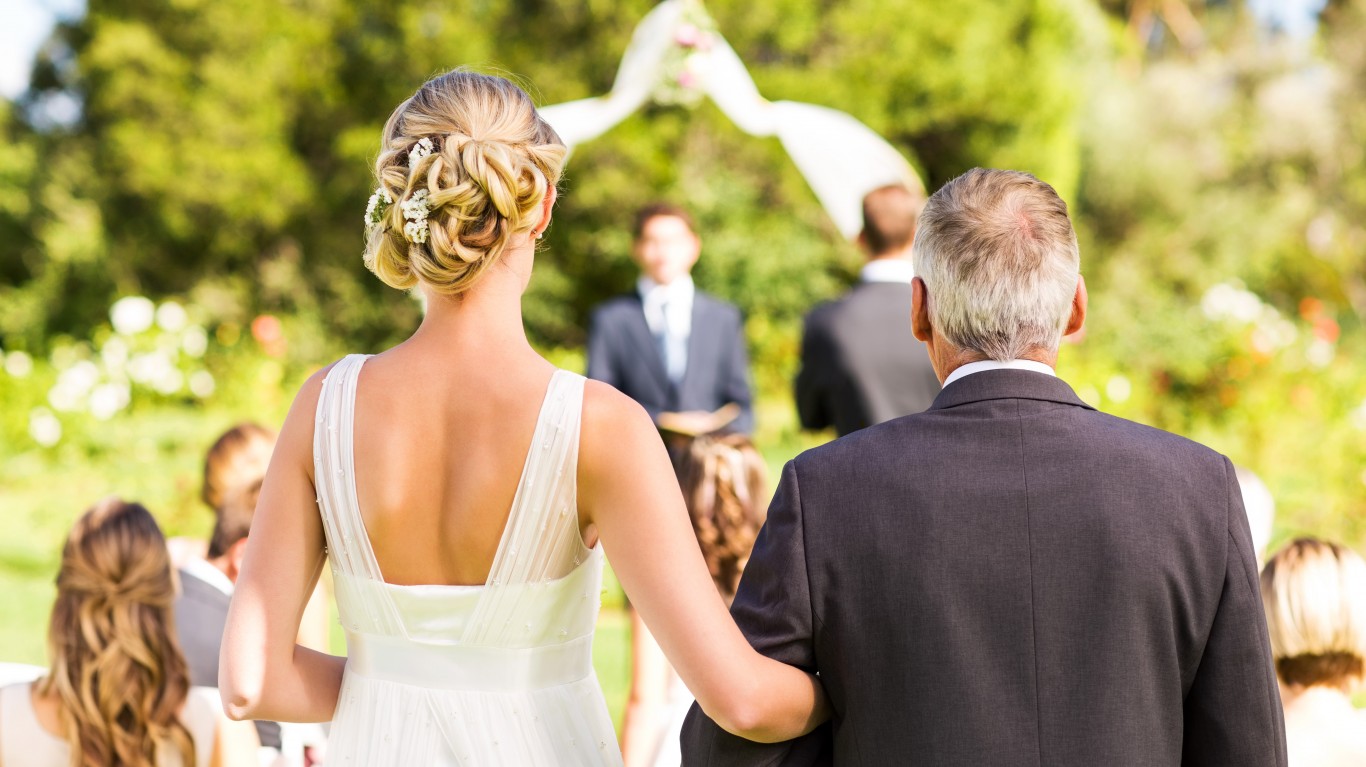
19. Father walking bride down aisle
Though today a father walking his daughter down the aisle at her wedding can be a sweet tradition, it actually dates to arranged marriages when a father’s presence was used to keep the groom from backing out. The tradition is still one that is honored by many brides, but some are choosing to walk down the aisle with both parents, multiple relatives, a different family member, or even a pet. Others are even choosing the symbolism of walking down the aisle alone.
[in-text-ad-2]
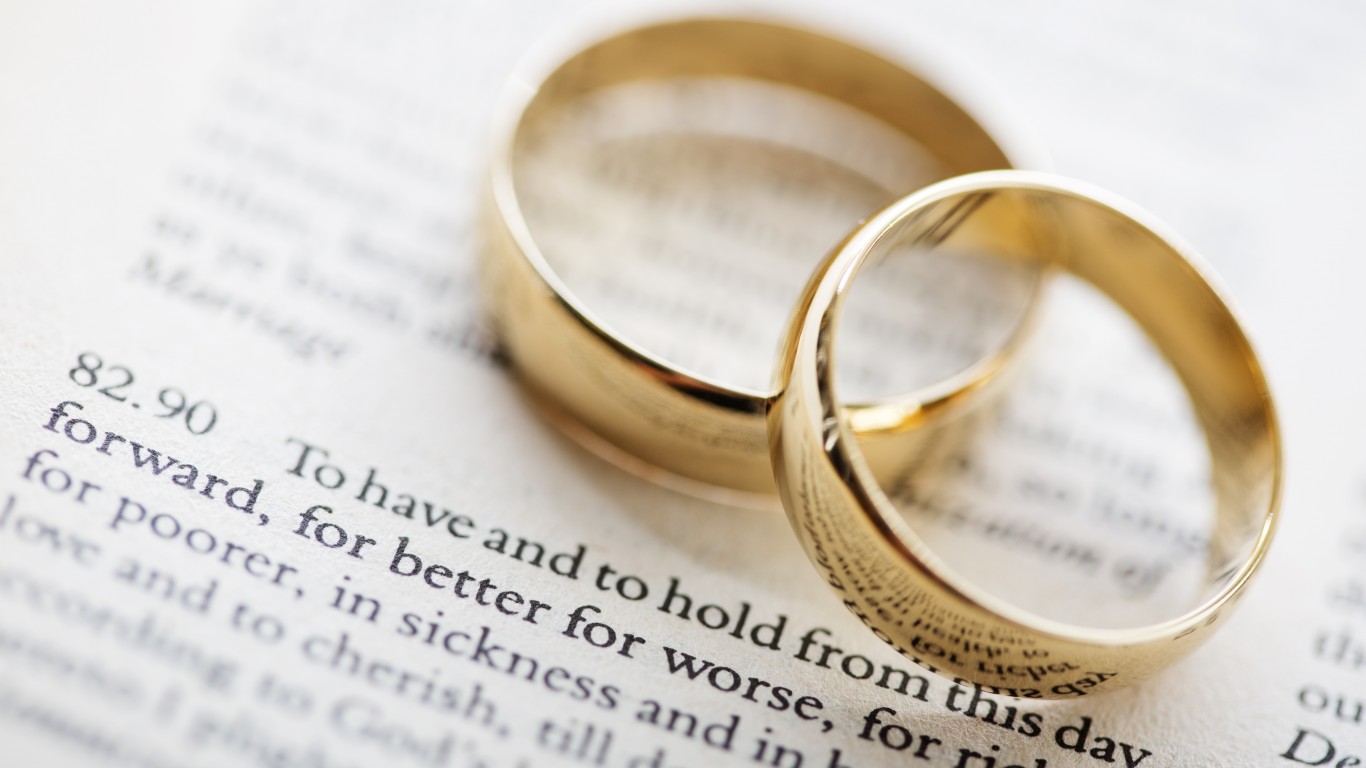
20. Traditional vows
Traditional vows can be traced back centuries, with each religion having its own version, and such vows are still used by many couples at the altar today. Though they have religious roots, some use them no matter how devout they may be, but they may choose just one part of the standard “to have and to hold, from this day forward, for better, for worse, for richer, for poorer, in sickness and in health, until death do us part” or adapt the words. In particular, brides are choosing to drop the problematic part where they promise to “to love, cherish, and obey their husbands. Other brides and grooms are now throwing out traditional vows altogether and writing their own personalized words to express their personalized love story.
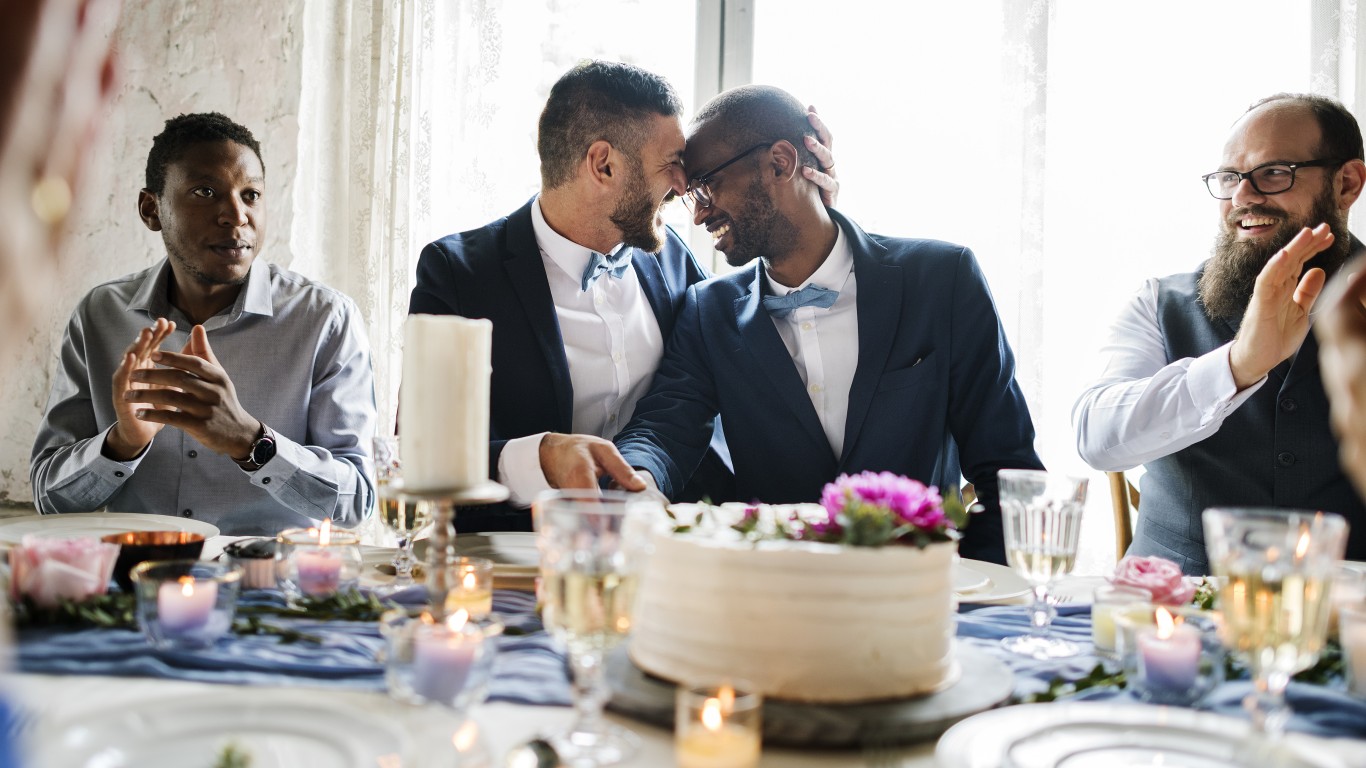
21. Receptions
Couples today may spend months planning their weddings, including every detail that goes into the food, decor, and music for their reception. But wedding celebrations weren’t always this elaborate. Dating back to the 1960s, parents were responsible for planning and paying for the bride’s reception. They were a simple affair held in the parent’s home, involving things like cake and punch.
[in-text-ad]
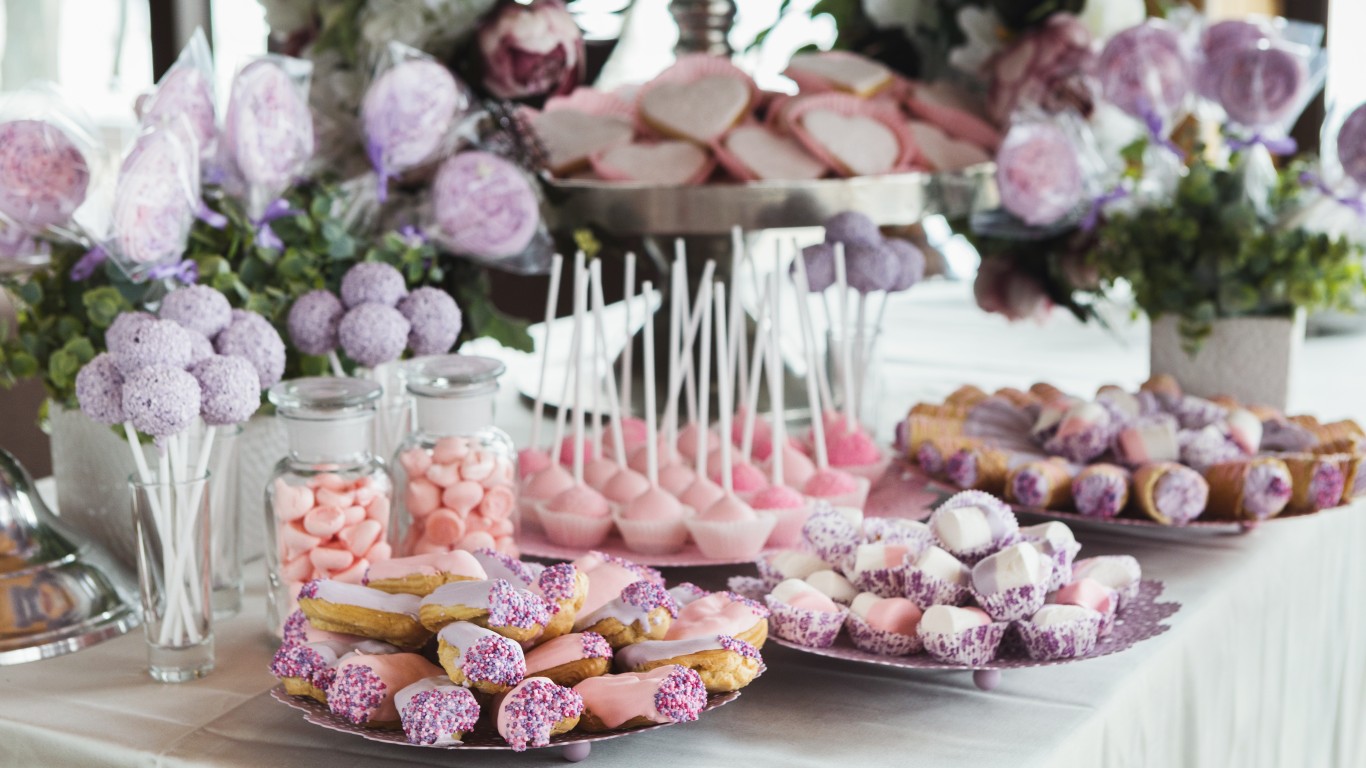
22. Wedding cake
Wedding cakes are a tradition dating back to ancient Rome, where they were a scone-like wheat or barley concoction broken over the bride’s head for luck and fertility. What would become today’s wedding cake started to take shape in late 18th-century England and became a status symbol based on the whiteness of the icing and the tiers. The modern cake no longer needs to be white or feature tiers. It also no longer needs to be a cake â new trends include everything from donuts to cheese wheels.
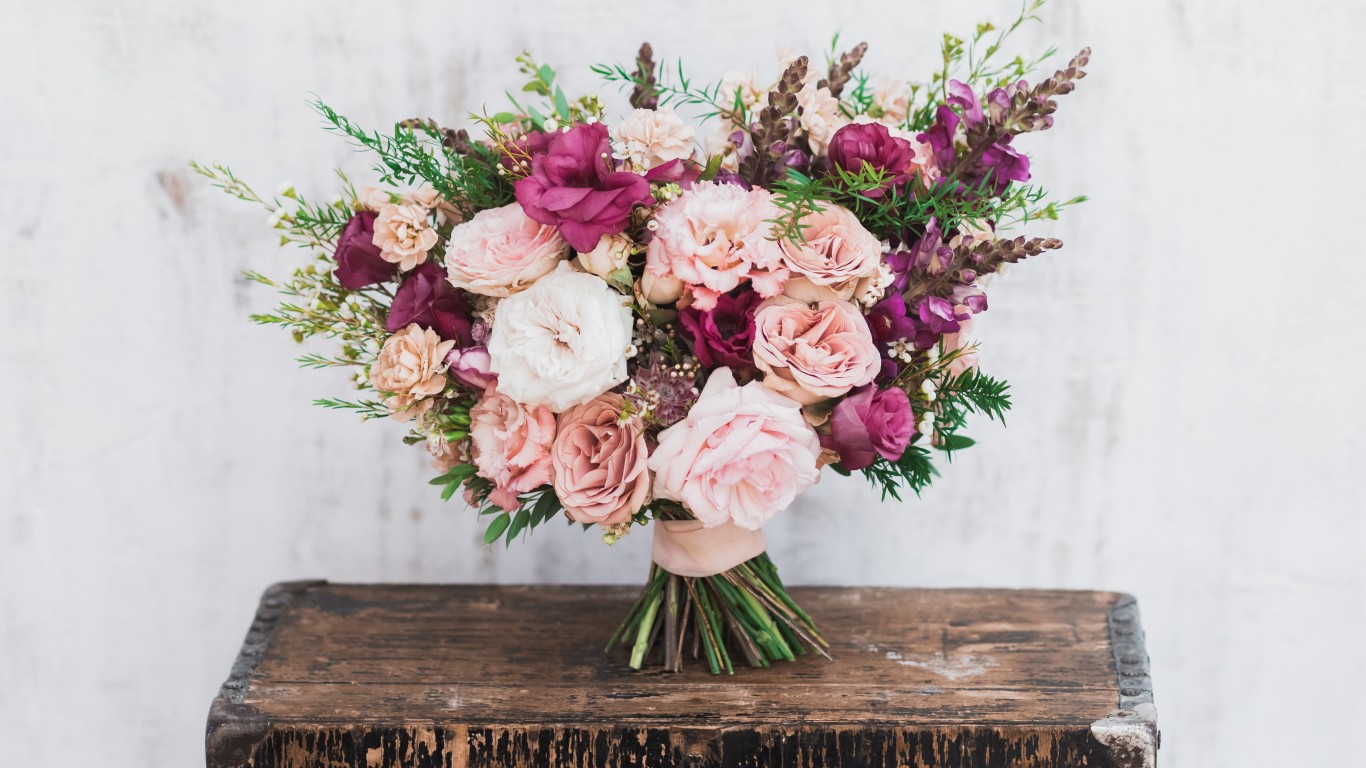
23. Bouquet toss
The bouquet toss is rooted in a tradition that dates back hundreds of years, when it was actually good luck to touch the bride. Guests would attempt to rip off pieces of her wedding dress. Brides started to toss their bouquets as a way to distract from the chaos. Although not as strong as the former tradition, tossing the bouquet is now becoming antiquated itself because single women do not like to be called out at a big event. Alternatives to bouquet tossing include handing the bouquet to a mother, grandmother, or couple who has been married the longest, or to just have a fun dance competition.
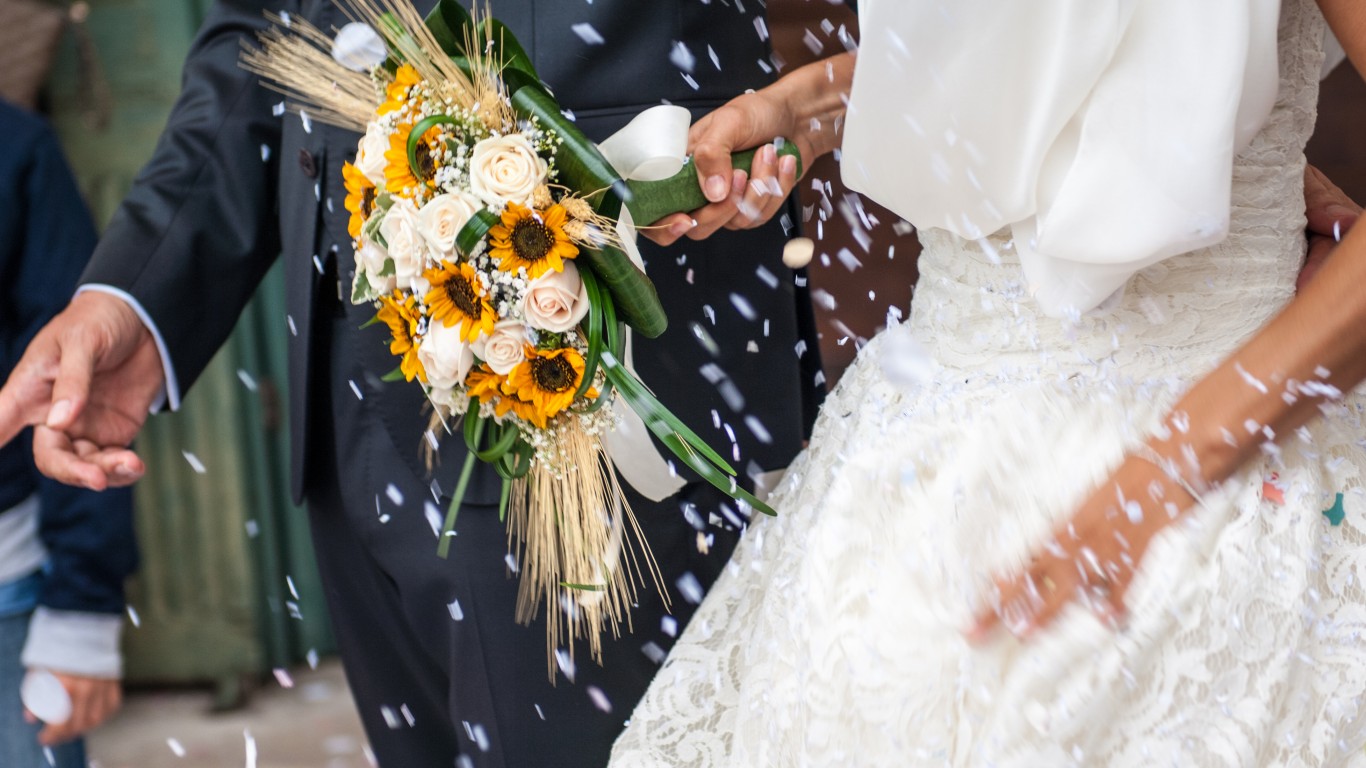
24. Throwing rice
The tradition of throwing rice at just-married couples symbolizes good luck, prosperity, and good fortune. Before rice, oats, grains, and dried corn were also used. Rice grew out of style due to reports that birds’ stomachs can expand if they eat the dried grain. Even though the reports turned out to be false, rice and other grains have proven to be a slipping hazard. That’s why flower petals are now the preferred alternative by wedding experts, as well as confetti, lavender, and bubbles.
[in-text-ad-2]

25. Honeymoon
The idea of a trip following the wedding started in 19th century England. Then, couples just traveled to see family and friends who couldn’t come to the ceremony. In the late 1800s, honeymoons started to change into trips of leisure only for the newlyweds. As world travel became easier, more couples started choosing more exotic destinations for their honeymoons in recent decades.
Are you ahead, or behind on retirement? For families with more than $500,000 saved for retirement, finding a financial advisor who puts your interest first can be the difference, and today it’s easier than ever. SmartAsset’s free tool matches you with up to three fiduciary financial advisors who serve your area in minutes. Each advisor has been carefully vetted and must act in your best interests. Start your search now.
If you’ve saved and built a substantial nest egg for you and your family, don’t delay; get started right here and help your retirement dreams become a retirement reality.
Thank you for reading! Have some feedback for us?
Contact the 24/7 Wall St. editorial team.